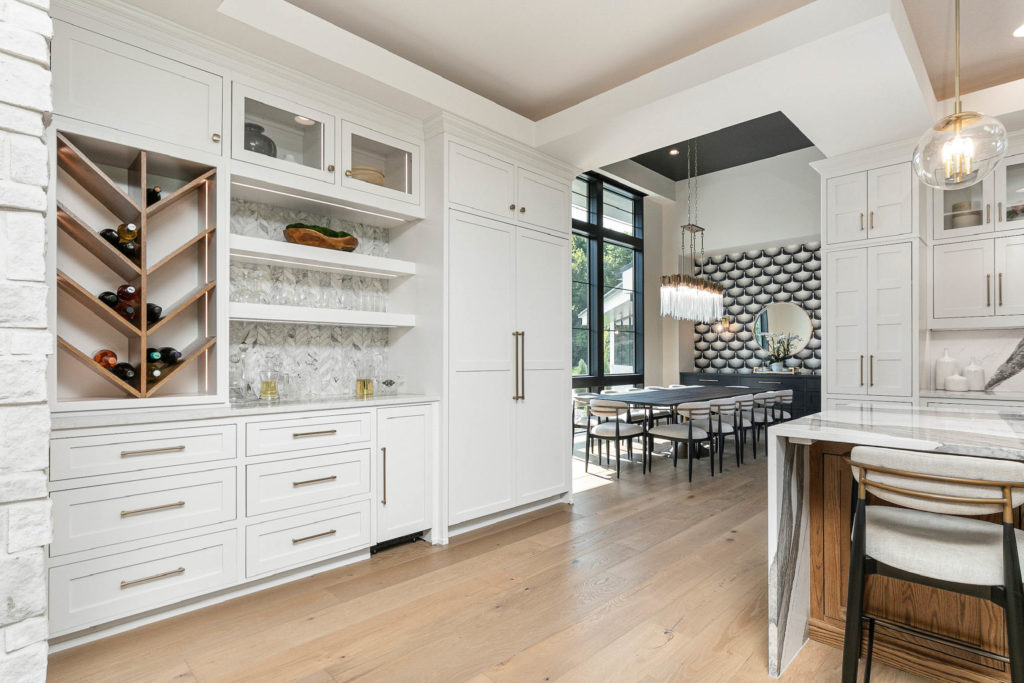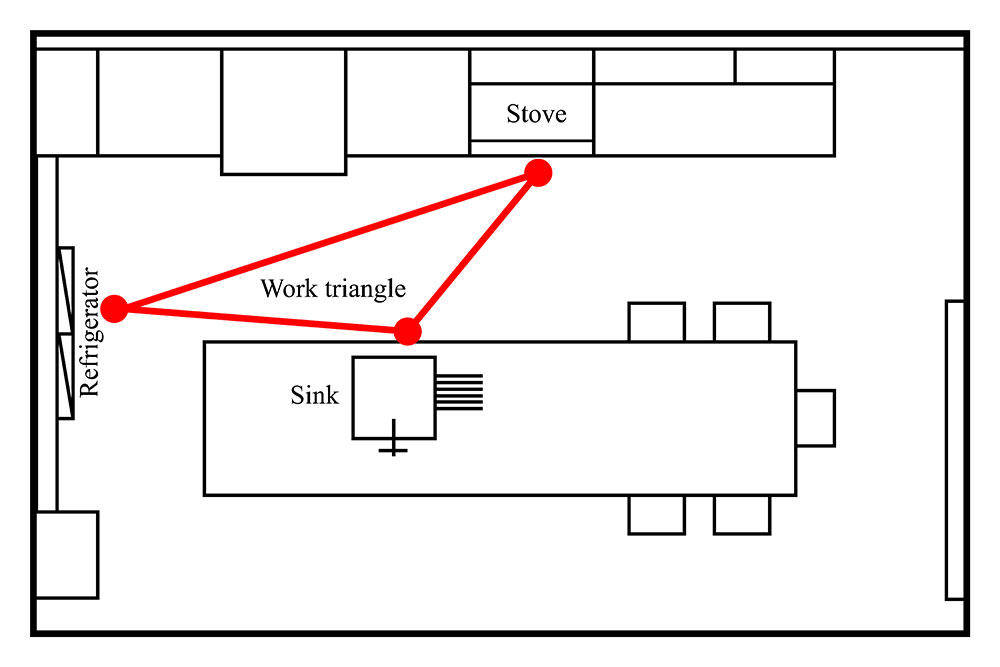
When it comes to modern home design, creating sightlines in your kitchen and living room not only maximizes the use of space but also enhances the aesthetic and functional flow of your home.
So, what are sightlines? Sightlines allow for clear views across different areas of your home (like a kitchen and living room), making spaces feel larger and more connected. This design strategy is especially beneficial in homes with an open floor plan, facilitating easier communication, better lighting, and a cohesive look.
Let’s explore how you can maximize your space through effective sightlines, ensuring your kitchen and living room design not only meet your needs but also reflect your personal style!
Unlock The Power of Clear Sightlines
Creating clear sightlines in your kitchen and living room design has many benefits. Sightlines not only amplify the feeling of more space but also transform activities like cooking and entertaining into a seamless experience.
You can watch TV or have a conversation while you’re prepping dinner or relax in the living room while listening for the oven to finish pre-heating. This connectedness fosters a sense of community within your home, making everyone feel included, whether they’re chopping vegetables or hanging out on the couch.
You can even keep an eye on your children if they are in the other room. With clear sightlines, the balance between supervision and relaxation becomes effortless!
Simple Strategies for Maximum Impact
To achieve the perfect sightlines in your home, consider the layout and the interaction between your furniture and fixtures. Choose pieces that support your vision of openness, like slender, streamlined furniture that complements (rather than dominates) the room.
A carefully positioned low-profile sofa or a slim console table can frame your living space without interrupting the view of the kitchen.
When designing your kitchen, the strategic placement of islands and appliances plays a big role. Aim for a layout that encourages engagement with the living area, ensuring you’re part of the conversation, even if you’re busy baking cookies.
The blend of design elements, such as flooring and wall color, across both spaces not only unites them visually but also enhances the feeling of spaciousness. It’s a win-win!

Related Post: 4 Must-Haves in Your Open Kitchen Design
When creating sightlines, embrace the minimalist look when it comes to decor and avoid the temptation to fill every corner. A less-is-more approach not only accentuates the openness but also makes each chosen piece stand out as a statement piece.
By thoughtfully positioning your furnishings, you set the stage for a home that’s as open, inviting, and uniquely yours.
Related Post: How to Make Your Home Light and Airy With Interior Design
How Technology Can Boost Your Open-Plan Dream
Adopting smart home systems can enhance the sightlines in your home and change how you engage with your living areas. You can adjust the lighting, music, and temperature in both your kitchen and living room with just a touch, creating a perfect balance that blends with the design.
Modern technology improves your home’s functionality while maintaining clear sightlines, making rooms feel larger and more visually aligned. Cheers to that!
What to Avoid When Creating Sightlines
When creating sightlines in your home, there are a few things that you will want to avoid:
- Overcrowding. Crowding areas like a kitchen or living room with too many pieces of furniture or decor can make them look much smaller than they really are. Oftentimes, the “less is more” approach rings true.
- Awkward Placement. Placing tall or bulky appliances in your kitchen can block the visual connection between your living room. Excess clutter can put a damper on the aesthetic flow of your home and make communication more difficult.
- Clashing Patterns. Another aspect to be cautious of is mixing patterns in flooring or wall colors that don’t blend from one space to another. This can disrupt the creation of seamless sightlines.
- Poor Lighting. Inadequate lighting can create shadows and dark corners, undermining the open and airy vibe that is essential to a successful sightline design.
This post from Real Simple highlights mistakes to avoid when arranging your furniture to create a more cohesive space, so be sure to check it out for more tips!
Infusing Your Style Into a Spacious Design
Infusing your home with personal style while maintaining open sightlines is all about maintaining balance and making strategic choices that let your personality shine through without overwhelming your spaces.
Related Post: Get The Most Our of Your Living Room Design
Consider incorporating vibrant throw pillows, rugs with fun patterns, or statement art pieces that add charm without creating clutter. Utilize vertical space by adding floating shelves where you can showcase your favorite photos or keepsakes, enhancing the room’s character without sacrificing openness.
In addition, furniture with unique textures and colors is key to making a true statement in a living room.
Sightline design isn’t just about maximizing space. It’s about creating a home that feels like you. So go ahead, get creative, and show off your personality – the possibilities are endless!
Kitchen and Living Room Design by Ellecor
An open floor plan is a great way to create seamless sightlines in your home. Whether you are looking for a complete redesign or home decor help, Ellecor Interior Design is just what you need. Check out our projects for inspiration, and contact us to get started!


